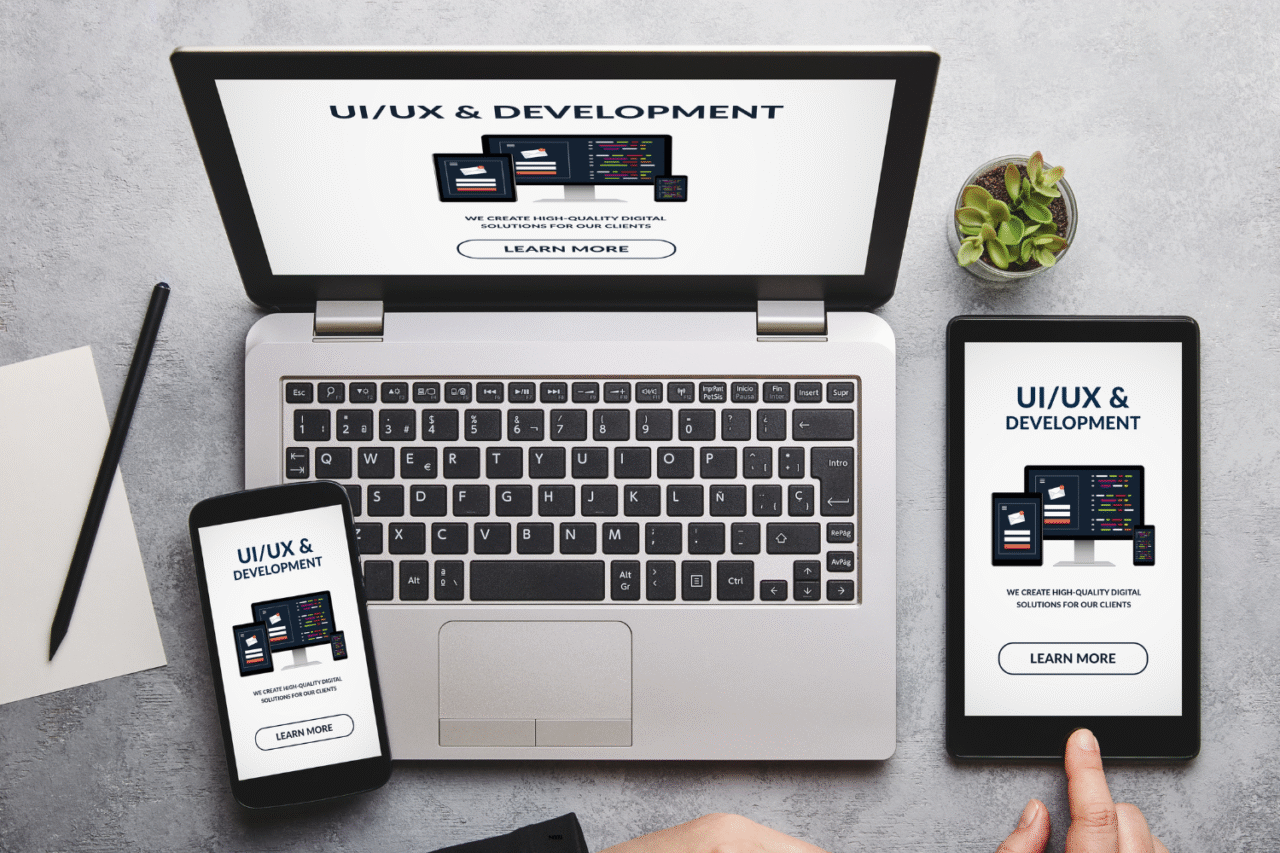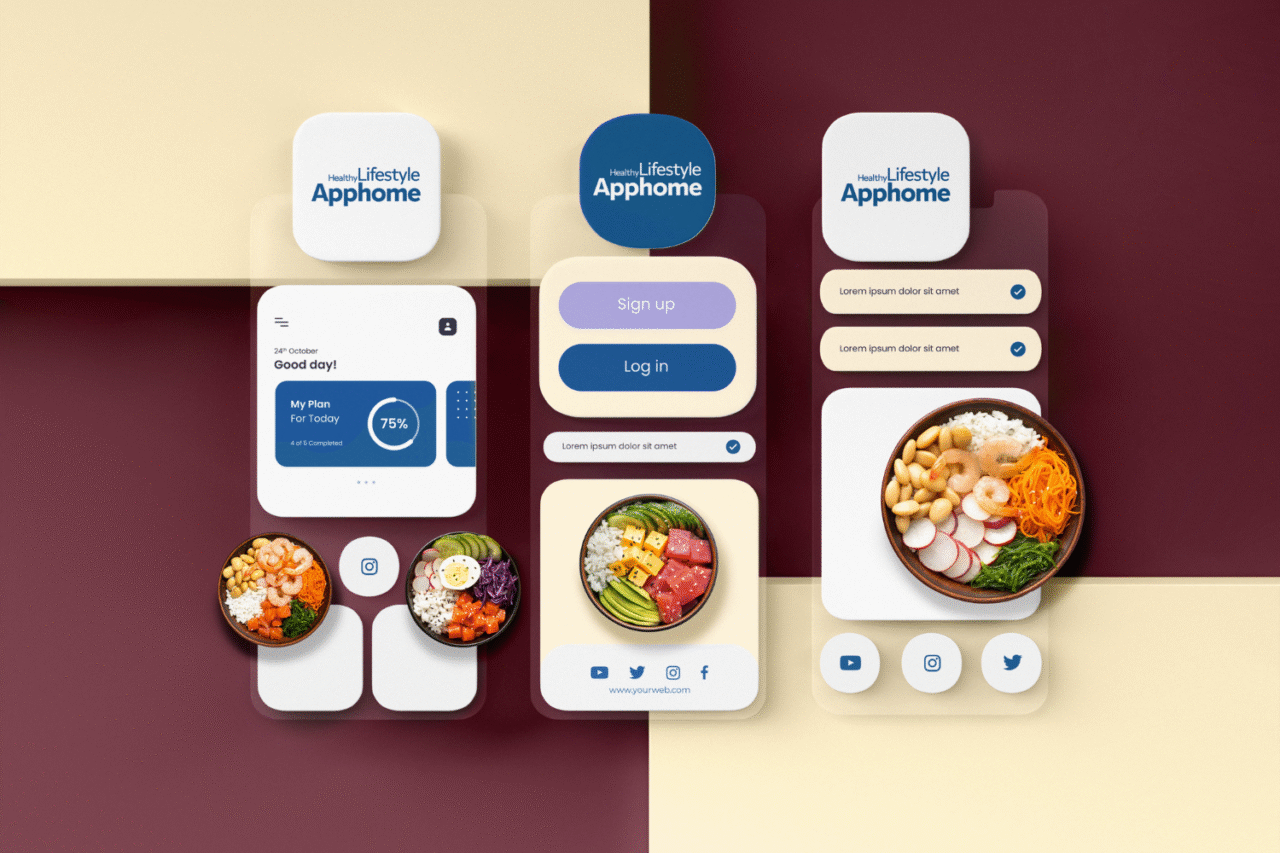Transforming User Interactions into Meaningful Experiences
In today’s fast-paced digital world, a seamless and intuitive online experience is more important than ever. Whether it’s your website, mobile app, or software, how users interact with your platform can determine whether they stay, engage, or leave. This is where UI/UX design comes in—a crucial component for building a digital presence that resonates with users.
At the heart of every successful digital product lies outstanding UI/UX design. It’s not just about how it looks; it’s about how it works, feels, and how easy it is for users to achieve their goals. In this blog, we’ll explore why UI/UX design is crucial, how it enhances user satisfaction, and how it can elevate your brand.
What is UI/UX Design?

UI Design (User Interface)
UI Design focuses on the visual elements of a digital product. This includes everything from buttons, icons, color schemes, typography, to overall layout. The goal of UI design is to make the interface visually appealing while ensuring consistency and brand alignment. Great UI design is not just attractive, but also functional, making sure that every element is easy to navigate and access.
UX Design (User Experience)
While UI deals with the look and feel of the interface, UX design focuses on the overall experience of the user while interacting with the product. UX design aims to make the user’s journey as smooth, efficient, and enjoyable as possible. It involves understanding user behavior, solving problems, and ensuring that users have a positive experience from start to finish.
Both UI and UX are interconnected, and together they form the backbone of a product that not only looks great but also delivers an outstanding user experience.
Why UI/UX Design is Crucial for Your Business
The design of your product has a direct impact on how users perceive your brand. A well-designed product can boost user satisfaction, build trust, and improve overall performance. Here’s why UI/UX design matters:
First Impressions Matter
In the digital world, users form opinions about your brand within seconds. If your website or app looks unprofessional or is hard to navigate, chances are, users will leave without exploring further. A strong first impression is essential for gaining and retaining users.
Enhances User Satisfaction
Good UX design ensures that users can easily find what they are looking for. Whether it’s shopping for a product, reading an article, or using a service, a seamless experience leads to increased user satisfaction. Satisfied users are more likely to return and become loyal customers.
Increases Conversion Rates
UI/UX design plays a critical role in conversions. A clean, easy-to-use website with intuitive navigation increases the likelihood that users will complete actions like making a purchase, filling out a form, or subscribing to a service. It reduces friction and leads to higher conversion rates.
Reduces Bounce Rates
A cluttered, difficult-to-navigate website causes frustration and leads users to leave quickly. On the other hand, a streamlined, well-organized design keeps users engaged, reducing bounce rates and encouraging them to explore further.
Builds Brand Loyalty
A positive user experience fosters trust and emotional connection. Users are more likely to develop brand loyalty when they feel that a product or service is easy to use, consistent, and meets their needs. Strong UX design can lead to repeat customers and even brand advocates who recommend your business.
Key Elements of UI/UX Design That Drive Success
Visual Hierarchy: Guiding Users Naturally
A good UI design establishes a clear visual hierarchy. By emphasizing important elements—such as call-to-action buttons, titles, or images—designers guide users through the content naturally. A well-organized layout makes it easier for users to focus on what matters most, leading to a smoother, more intuitive experience.
Color and Typography: Setting the Mood
Colors and typography are not just aesthetic choices—they play an important role in conveying your brand’s identity and message. The right combination of colors can influence user emotions and behavior, while clear typography ensures readability and enhances the overall user experience. Effective color and font choices make your platform more engaging and professional.
User-Centric Approach: Understanding User Needs
Great UX design starts with a deep understanding of your users. Through research and user feedback, designers gain insights into user preferences, pain points, and goals. This research-driven approach ensures that the product is designed to meet real user needs, not just theoretical ones.
Consistency: Enhancing Familiarity
Consistency across your platform is essential for creating a smooth, predictable experience. Repeated design patterns, buttons, and icons help users quickly familiarize themselves with how to interact with your product. This consistency eliminates confusion and makes your platform feel more intuitive.
Mobile Responsiveness: Design for All Devices
With mobile usage on the rise, ensuring your platform is mobile-friendly is essential. UX/UI designers focus on creating responsive designs that look and function seamlessly across all devices—whether it’s a desktop, tablet, or smartphone. A mobile-responsive design enhances user experience and broadens your reach.
The UI/UX Design Process: From Concept to Launch

A successful UI/UX design process follows several stages to ensure that the final product delivers value to users. Here’s a look at the key stages involved:
Discovery and Research
This phase involves understanding the target audience, business goals, and gathering insights about the competition. User research, market analysis, and competitor evaluation help inform design decisions.
Wireframing and Prototyping
Wireframes are basic blueprints for the layout and structure of the product. Prototypes are interactive models that demonstrate how the product will function. These early designs are essential for testing usability and gathering feedback before development begins.
Visual Design
Once the wireframes and prototypes are refined, the visual design phase begins. This stage focuses on aesthetics—applying colors, typography, images, and other visual elements that define the brand’s identity.
User Testing
After the design is complete, user testing is conducted to ensure that the product is functional and easy to use. Real users interact with the prototype, and feedback is gathered to make necessary improvements.
Launch and Iteration
After testing, the final design is developed and launched. However, the process doesn’t end there. Ongoing user feedback and performance analysis help refine the product and make it even better over time.
UI/UX Design Trends to Watch in 2025
To stay ahead of the competition, businesses must keep up with the latest trends in UI/UX design. Here are some of the key trends to watch out for in 2025:
Aesthetic and energy-efficient, dark mode continues to grow in popularity as users demand more customization options across their digital experiences. Once considered a niche feature, dark mode has become a standard in modern user interfaces, offering a sleek visual appeal that reduces eye strain, particularly in low-light environments. Additionally, it contributes to improved battery life on OLED and AMOLED screens by minimizing power consumption. As personalization becomes increasingly important to users, developers and designers are prioritizing dark mode alongside other accessibility and theming options to enhance comfort, usability, and overall satisfaction.
Small animations or subtle visual effects play a crucial role in enhancing user experience by providing immediate feedback and making interactions feel more responsive and engaging. These micro-interactions—such as button presses that ripple, icons that animate on hover, or loading indicators that smoothly transition—create a sense of fluidity and liveliness within digital interfaces. They guide users intuitively, confirming actions, highlighting changes, and reducing uncertainty during navigation. By incorporating thoughtful motion design, developers can make applications feel more polished, interactive, and enjoyable, ultimately boosting user satisfaction and retention.
With advances in technology, 3D elements and immersive design are becoming more common, especially in apps and websites aiming to deliver cutting-edge user experiences. The growing support for WebGL, CSS 3D transforms, and powerful graphic engines has enabled designers to incorporate interactive 3D models, animations, and environments directly into the browser or mobile interface. These elements not only enhance visual appeal but also deepen user engagement by creating a sense of depth and realism. Whether it’s for showcasing products, enhancing storytelling, or building virtual environments, immersive design is pushing the boundaries of digital interaction, transforming static pages into dynamic, experiential platforms.
With the rise of voice assistants like Siri, Alexa, and Google Assistant, integrating voice interfaces into your designs can significantly enhance both usability and accessibility. Voice interaction allows users to navigate apps, perform tasks, and access information hands-free, which is especially valuable in situations where touch input is inconvenient or impossible—such as when driving, cooking, or assisting users with physical impairments. By incorporating natural language processing and voice recognition technologies, designers can create more inclusive and intuitive experiences. As voice technology continues to evolve, it opens up new possibilities for conversational interfaces, making digital products more efficient, personalized, and human-centered.
Tailoring user experiences based on behavior and preferences can lead to significantly higher engagement, satisfaction, and retention. By leveraging data such as browsing history, interaction patterns, and user demographics, designers and developers can create personalized interfaces that feel more relevant and intuitive to each individual. This might include recommending content, adjusting layout elements, or modifying navigation paths to better suit a user’s habits and goals. Personalization not only makes the experience more efficient and enjoyable, but also fosters a stronger emotional connection between the user and the product. As users increasingly expect customization in digital services, thoughtful personalization has become a key strategy for building loyalty and enhancing overall user experience.
Get in Touch: Let’s Bring Your Vision to Life
At Outsource HR Services, we specialize in crafting intuitive, visually stunning, and user-centric designs that resonate with your audience and elevate your brand. Whether you’re looking to redesign your website, launch a new mobile app, or create a digital product from scratch, our UI/UX design team is here to help you every step of the way.
